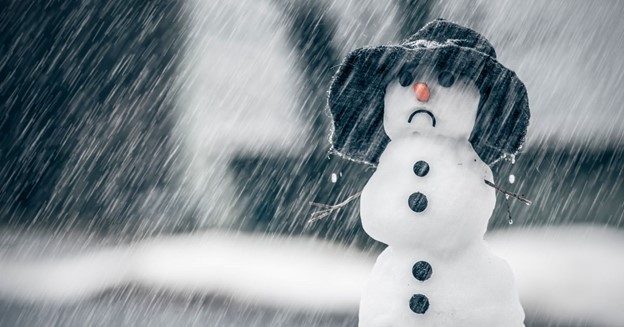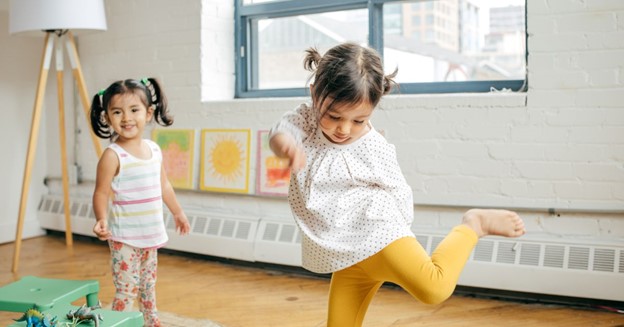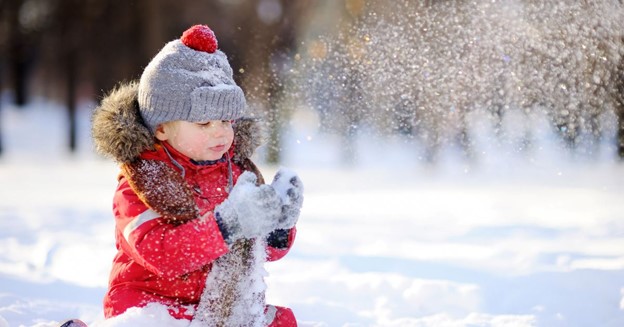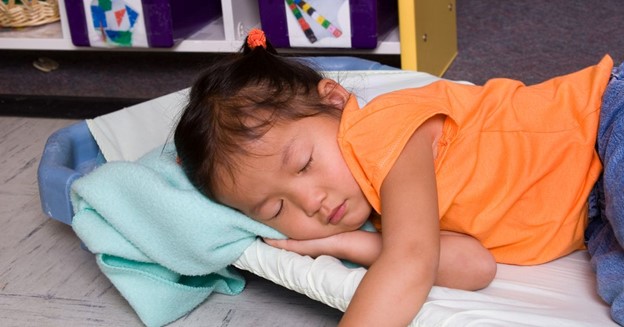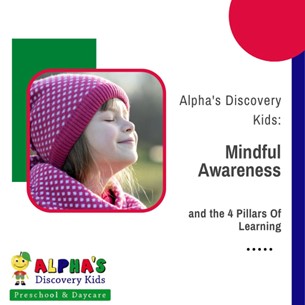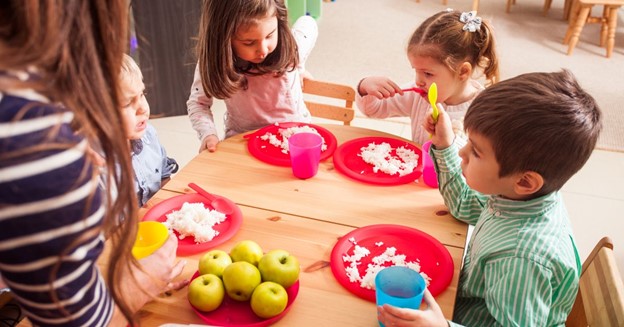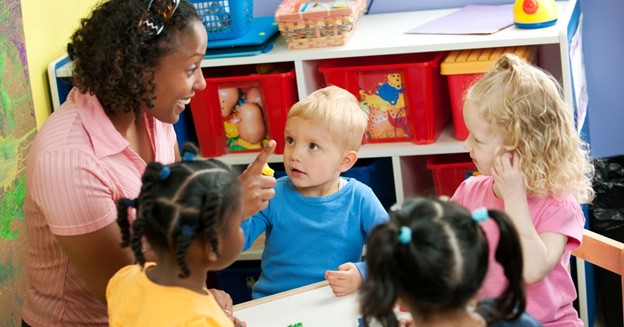Embracing Winter: Battling the Blues
Embracing Winter: Battling the Blues
by Susie Beghin, RECE, Founder of Alpha’s Discovery Kids
As we get to the end of February in a cold climate, it’s not uncommon for adults to find themselves grappling with the winter blues. Unlike children, many adults shudder at the thought of heading out into the frigid temperatures. Paired with the often grey skies, winters can be a struggle for many people. However, at Alpha’s Discovery Kids, we believe that with a mindful approach, parents can not only navigate but also turn the winter season into a time of warmth, connection, and family well-being.
Here’s some tips to help battle those winter blues:
- Outdoor Adventures:
Many adults look at winter as a period of hibernation. But venturing outdoors, even in colder temperatures, can significantly impact your mood and overall well-being. Make it a family affair—whether it’s building snow forts, taking a winter hike, or engaging in a friendly snowball fight, these outdoor activities offer an excellent way to bond with your children while boosting everyone’s spirits.
- Dress for the Occasion:
Don’t let the chill keep you indoors. Equip yourself and your family with the appropriate winter gear. Bundle up in layers, ensuring warmth and comfort during your outdoor excursions. The simple act of dressing for the weather can make the outdoors more inviting, allowing you (and your children) to fully enjoy the wonders of the winter landscape.
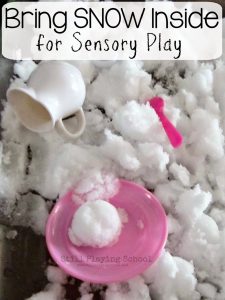
- Create a Winter Wonderland at Home:
Sometimes, the best adventures are closer than you think. Transform your home into a cozy winter haven. Get creative with indoor activities, exploring snow indoors (yes it’s possible), baking seasonal treats, or even having a family movie night with films that celebrate the magic of winter. By bringing the warmth indoors, you create a nurturing environment that counters the chill outside.
- Mindful Moments:
Winter provides a unique opportunity for mindfulness. Encourage quiet moments of reflection, perhaps by the fireplace or with a warm cup of cocoa. Incorporate mindfulness practices into your routine, such as deep breathing or simple meditation. These moments of calm can be grounding, fostering a sense of peace and emotional well-being.
- Stay Connected:
Winter blues often come with a sense of isolation. Combat this by staying connected with friends and family. Plan winter-themed gatherings or virtual meet-ups. Building a sense of community, even from a distance, can alleviate feelings of loneliness and contribute to a more positive winter experience.
- Plan for Physical Activity:
Physical activity is a powerful tool in combating the blues. Plan regular exercise sessions, whether it’s indoor workouts, winter sports, or simple stretching routines. Not only does this boost your mood, but it also sets a positive example for your children, instilling the value of staying active even during the colder months.
By taking a proactive and family-centered approach, parents can turn the winter season into a time of connection, joy, and shared experiences. At Alpha’s Discovery Kids, we recognize the importance of family well-being, and we encourage parents to see the beauty and warmth that winter can bring when approached with a positive mindset. Let this winter be a season of togetherness, creating lasting memories that your family will cherish.
For more information and early childhood tips, follow Susie Beghin on YouTube.
Winter Activities for Kids: Keeping Kids Active and Engaged
Winter Activities for Kids: Keeping Kids Active and Engaged
by Susie Beghin, RECE, Founder of Alpha’s Discovery Kids
As a mother and early childhood educator, I have witnessed the transformative influence that offering children a well-rounded educational journey can have. And at Alpha’s Discovery Kids, our commitment to giving children the best start in life is embodied in our 4 Pillars of Learning. These pillars, including Language & Literacy, STEAM, Physical Activity & Nutrition, and Mindful Awareness, form the foundation for providing children with the best start in life.
Among these pillars, Physical Activity & Nutrition hold a special place. It’s not merely about keeping young bodies in motion; it’s a holistic approach that nurtures the mind and promotes overall well-being. Even during the winter months, when the cold might tempt us to stay indoors, incorporating physical activity remains key.

Cold weather doesn’t have to mean a halt to outdoor play. At Alpha’s Discovery Kids, we recognize the importance of engaging children in physical activities, even when the temperature drops. The benefits of physical activity extend far beyond the obvious physical advantages. While it undoubtedly promotes physical health by enhancing bodily functions, building strength, and supporting the development of bones and muscles, its impact on mental and emotional health is equally significant. Physical activity has been shown to elevate mood, reduce stress, and foster a positive mindset from an early age.
And although, as adults, we don’t always enjoy heading out into the cold, most children tend to love it! Winter provides unique opportunities for physical activities that are not only enjoyable for children but also contribute to their development. Sledding, snowball fights, and building snowmen are not just recreational; they enhance gross motor skills, encourage teamwork, and promote creativity. These activities keep kids active and contribute to their social and emotional growth.
In addition to outdoor play, indoor physical activities are equally important during the winter. Parents play a pivotal role in encouraging physical activity at home, especially when outdoor play might be limited. On days when heading outdoors is challenging, there are numerous indoor activities that you and your child can enjoy, all with household items you likely already have. Here are a few ideas:
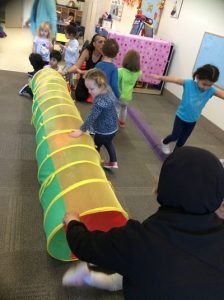
- Magical boxes – Provide your child with a large box and witness its transformation into fire trucks, tunnels, or a fantastic canvas for painting.
- Pillow paradise – Pillows can be more than just for resting. Try crafting an obstacle course or a cozy pillow fort for endless fun.
- Dance party extravaganza – Discover music the whole family enjoys and let loose with a dance party. It’s a fantastic way to get everyone moving and grooving.
- Scavenger hunt quest – Get creative with hiding spots and organize an entertaining scavenger hunt.
- Family flex– Engage in easy stretching exercises suitable for the entire family. It’s a great way to stay active and flexible.
These indoor activities not only keep your children physically active but also incorporate elements from the STEAM pillar (Science, Technology, Engineering, Art, and Math). Building a pillow or blanket fortress enhances engineering skills, and using a box as a canvas introduces artistic elements. Beyond the physical benefits, these activities stimulate young minds and foster a love for learning.
As winter sets in, don’t let it dull the sparkle of your kids’ activity. Integrating physical activity into their routine, even during the colder months, has a profound positive impact. The key is to make it fun and seamlessly woven into daily life. So, let’s embrace the winter wonderland and ensure that, even in the cold, our children are active and engaged.
For more early childhood education tips , check out my YouTube videos.
Winter Safety Tips for Kids: Keeping Your Little Ones Cozy and Secure
Winter Safety Tips for Kids: Keeping Your Little Ones Cozy and Secure
by Susie Beghin, RECE, Founder of Alpha’s Discovery Kids
As parents, caregivers, and educators at Alpha’s Discovery Kids, our goal is to provide children with the best possible start in life. We understand the importance of guiding and supporting them in various aspects, especially when it comes to their safety. When winter sets in and our surroundings become blanketed in snow, it’s crucial to ensure that our children are not only warm and comfortable but also safe during outdoor activities.
At Alpha’s Discovery Kids, children are encouraged to play outdoors for two hours per day, even during the winter months, unless the weather conditions are deemed unsafe. This time spent outdoors is invaluable for their physical well-being, social development, and connection with the world around them. However, for this outdoor adventure to be both fun and secure, it’s important to keep a few winter safety tips in mind.
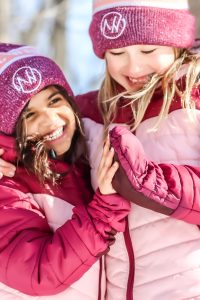
Dress your children appropriately for the weather
Ensuring your children are appropriately dressed for the weather is crucial and layers are key. Layering allows your child to adjust their clothing according to the temperature and their activity level. When it’s cold outside, those multiple layers act as a thermal barrier, trapping warm air close to the body while shielding against the chilling winds. Proper winter attire should include a warm base layer, an insulating layer to keep them cozy, and a waterproof and windproof outer layer. Don’t forget to cover the extremities, too; warm mittens or gloves, a snug hat, and insulated, waterproof boots will keep your child’s fingers, head, and feet warm and dry.
While we focus on dressing for winter success, we should be aware of the more subtle risks of winter attire. Scarves and hood strings, for example, can present strangulation hazards for small children. To minimize this risk, consider neck warmers or drawstrings that release easily to protect against the dangers associated with traditional scarves and hoods.
Loose clothing is also a concern during the winter season. Loose garments can become caught on playground equipment or present tripping hazards, particularly in the snow. Make sure your child’s winter clothing is well-fitted and not excessively loose to reduce these risks.
Be aware of winter hazards
Winter is a wonderland for kids; snowball fights, building snowmen, and sliding down snow-covered slopes are some of the joys they look forward to. However, as caregivers, we are aware of the dangers, such as snowbanks near roads or the risk of kids playing near snowplows. It’s essential to educate children about playing safely and set clear boundaries. They should understand the potential dangers and learn how to avoid them, especially near streets and roads.
We’ve all heard the phrase, “Children should be seen and not heard,” but during the winter, it’s about them being seen and not hidden. Bright clothing, particularly reflective gear, is a must. With the days growing shorter and the sun setting early, visibility becomes a safety concern. Reflective materials on your child’s outerwear and backpack help ensure they are visible to drivers during those dark winter days.

Child playing with snow in winter.
As the snow and ice cover the ground, it’s crucial for children to understand that it’s essential to stay away from roads, open water such as rivers and lakes, or thin ice. They might be enticed by the allure of frozen ponds or lakes, but the ice’s thickness can be deceiving. Teach them the risks associated with thin ice and remind them to keep a safe distance.
Despite the cold temperatures and snowy landscapes, wintertime is a season filled with endless opportunities for outdoor play and adventure. Children love exploring the winter wonderland, building snowmen, and making snow angels. It’s our responsibility as parents and caregivers to provide them with the knowledge and the attire they need to enjoy these experiences safely. At Alpha’s Discovery Kids, we encourage children to embrace the magic of winter, fostering their love for the season while keeping them cozy and secure. So, when winter arrives, don’t keep your children indoors; let them go out and explore the beauty and excitement of this season.
For more information about topics related to early childhood, check out my YouTube videos.
Navigating Naptime: A Guide to Transitioning Naps for Growing Kids
Navigating Naptime: A Guide to Transitioning Naps for Growing Kids
by Susie Beghin, RECE, Founder of Alpha’s Discovery Kids
In the world of parenting and nurturing young minds, few subjects are as frequently discussed as sleep. Sleep isn’t just a routine part of life; it’s a cornerstone of a child’s well-being, influencing their physical health, emotional stability, cognitive development, and future success. As both a mother and an early childhood educator, I’ve seen firsthand the critical role that sleep plays in a child’s life. It’s not just a matter of rest; it’s a fundamental building block for their growth and happiness.
At Alpha’s Discovery Kids, we understand that there is no universal approach when it comes to sleep. Just as each child’s personality is unique, so are their sleep patterns. One of the common sleep-related issues we encounter in our daycare setting is the transition away from napping. As children mature, their needs and rhythms evolve, particularly when it comes to daytime naps. We recognize that naps are a vital component of early childhood, supporting their development and well-being. However, we’re also acutely aware that as children grow older, some may require shorter naps or even forego them altogether. This journey isn’t a one-size-fits-all experience; it’s a uniquely personal adventure for every child.
Phase Out Naps by Age: A Child-Led Approach
While there are general guidelines, it’s essential to remember that the transition from naps is a child-led process. As you can see from the chart below, sleep guidelines can vary with each age group, especially when it comes to children under 12 years old. At Alpha’s Discovery Kids, we understand the importance of an individualized approach to naps and sleep. Typically, as children grow and reach the age of around three years old, they may naturally begin to phase out naps. Signs that your child may be ready to move beyond regular napping include having shorter naps during the day, experiencing difficulty falling asleep for naps, or staying up very late in the evenings. Our educators observe these signs and adapt accordingly, ensuring your child gets the rest they need without pushing them into a set pattern.

Consistency Between Home and Daycare
For parents of young children who attend daycare, achieving consistency in nap schedules is a crucial goal. It’s important for parents and caregivers to familiarize themselves with the daycare’s nap routines. This way, they can begin to coordinate their child’s nap schedule with the one followed at daycare. For instance, if your child is in the process of transitioning to a single, longer nap in the afternoon, the key is to gradually shift their naptime to synchronize with the daycare’s routine. This gradual adjustment, typically 15 minutes per day or every few days, ensures children’s comfort and a smoother adaptation to the new schedule. This synchronization not only facilitates a seamless transition but also helps parents maintain sleep consistency during weekends and breaks.
Why Slowly Phasing Out Naps Matters
Transitioning from naps can be a sensitive process, and going slowly is crucial as rushing this transition can lead to an overtired (and cranky) child. The goal is to allow children to ease into their new nap schedule. This slow transition is vital because abruptly stopping naps can be overwhelming for a child. As parents and educators, we want to provide the child with a comfortable and gentle shift to ensure their well-being.

Cute little kid girl hugging teddy bear sleeping lay in cozy bed, happy small child embracing toy fall asleep on soft pillow white sheets covered with blanket having healthy night sleep, top view
Child-Led Napping at Alpha’s Discovery Kids
Our child-led approach involves closely observing your child’s nap patterns. If your child still benefits from naps, we will continue to provide them as needed, even up to four years old, and sometimes beyond. Some children, at three or four years of age, may still require a nap, while others might not. We let your child’s needs guide us, and if it’s evident that naps are necessary for your child’s health and well-being, we support them in this. It’s important to remember that there is no one-size-fits-all answer when it comes to napping. While most children may transition away from naps around three years old, some may continue to benefit from them for a more extended period.
The transition from naps is a significant milestone in a child’s development, and it’s essential to approach it with sensitivity and flexibility. At Alpha’s Discovery Kids, we aim to provide the right balance, ensuring your child is well-rested while allowing them to adjust to their individual needs. This approach allows for a more relaxed transition, whether your child requires a nap or not, while in our care.
By closely observing your child’s sleep patterns, synchronizing nap schedules, and respecting their unique needs, we ensure that nap time transitions are smooth and beneficial for both children and parents. Naps are an essential part of a child’s routine, and whether your child is ready to transition to a full day of wakefulness or still requires daytime rest, we are here to provide the support and flexibility they need.
For more information on early childhood topics, check out my YouTube channel.
Holiday Gift Ideas for Toddlers and Preschoolers
Holiday Gift Ideas for Toddlers and Preschoolers
by Susie Beghin, RECE, Founder of Alpha’s Discovery Kids
As the holiday season approaches, parents of young children, especially those with infants and toddlers, may find themselves swept up in the whirlwind and stress of preparations, gift buying, and festivity planning. As a parent myself, I understand that we’re often tempted to rush through the holiday preparations – the shopping, the decorating, and the meal planning – and, in the process, we can sometimes forget the profound significance of being present. The act of slowing down and being fully engaged with our little ones is, perhaps, one of the most special gifts we can offer them.
At Alpha’s Discovery Kids, we’ve always emphasized the importance of presence, and understand the magic of a child’s first few years of life is irreplaceable. These are the years when their brains absorb knowledge like sponges, and their hearts open wide to the love and warmth of family. For parents of young children, it’s a chance to slow down, savor the little moments, and enjoy the glow in their children’s eyes as they discover the magic of the season.
With the constant demands of work and daily life, these special moments with our children are a gift beyond measure. Whether it’s a quiet evening by the fireplace, a snowball fight, or simply enjoying a warm cup of cocoa, focusing on the present moment and embracing the joy of togetherness creates lasting memories.
That said, for many families, the holidays are also a time for gift-giving. But it’s easy to get swept up in the latest toy trends and gadgets. Interestingly enough, it’s often not the flashiest or most expensive gift that young kids want; it’s something that engages their developing minds, encourages creativity, and fosters fun. Being mindful when buying gifts for our children can go a long way in ensuring they are gifts that keep on giving.
So, instead of scrambling to buy the latest fad, consider gifts that align with our 4 Pillars of Learning.
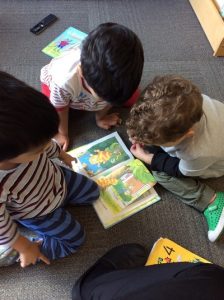
- Language & Literacy:
Beyond age-appropriate books, consider toys like sandpaper letters or magnetic letters that make learning the alphabet an engaging experience.
- Sandpaper Letters: These tactile tools help children connect letters with their shapes, enhancing early literacy skills.
- Magnetic Letters: Perfect for introducing young ones to the alphabet and word-building in an interactive way.
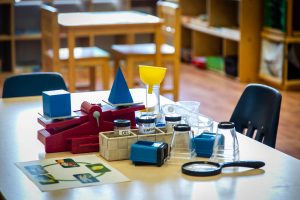
- STEAM (Science, Technology, Engineering, Art, and Math):
With a wide range of options, here are some ideas to explore:
- Science – Magnifying Glass: Spark your child’s curiosity with a tool that opens up the world of exploration.
- Technology – A Digital Microscope: An engaging combination of technology and science, allowing young minds to examine the world up close.
- Engineering – Building Blocks: Wooden building blocks are a classic toy that nurtures creativity and spatial skills.
- Arts – Art Supplies: From playdough to various types of paint and paintbrushes, these tools help children express themselves creatively.
- Math – Math Counters and Math Cubes: Fun manipulatives that make learning math concepts enjoyable.
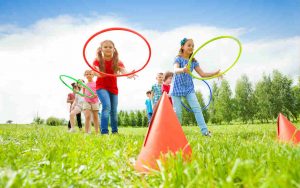
- Physical Activity & Nutrition:
Encouraging physical activity and promoting healthy nutrition for young children is not only vital for their well-being but also a wonderful gift in itself.
- Riding Toys – These encourage physical activity (whether a bike or a riding car)
- Pretend Play Food: Encourage imaginative play and teach young ones about nutrition with pretend food sets.

- Mindfulness:
You can never go wrong with gifts that encourage mindfulness.
- Be Kind Cubes: These cubes offer a fun way to teach children about kindness and empathy, important attributes that align with the pillar of mindful awareness.
- Sensory materials or tables: The materials encourage children to use their senses and evoke a sense of calm.
Remember, the best gifts for young children are those that nurture their development and foster their growth through the joy of learning through play.
Practicing mindfulness during this season is a gift we offer both to ourselves and our little ones. So, let’s take it slow, savor every moment of this season, and treasure the magic of the present with our children.
For more information on early childhood education topics, check out my YouTube videos or to book a tour, please contact us.
Fostering Mindful Awareness in the Early Years
Fostering Mindful Awareness in the Early Years
by Susie Beghin, RECE, Founder of Alpha’s Discovery Kids
As I wrote my book, ‘Learn To Play’, my primary mission always centered around one core principle: providing children with the most exceptional start in life. And in my role as a mother and Early Childhood Educator, I have an unwavering commitment to help our children develop the critical skills essential to their lifelong success.
Parents and caregivers hold a unique position as the primary educators in a child’s life. At Alpha’s Discovery Kids, we’ve made it our goal to complement and enhance the invaluable work you’re already doing at home. We achieve this by expertly guiding children through our Four Pillars of Learning, ensuring that their learning experiences are not just educational but deeply meaningful.
Each pillar contributes to a well-rounded and holistic educational experience. Our pillars consist of Language & Literacy, STEAM (Science, Technology, Engineering, Art, and Math), Physical Activity & Nutrition, and Mindful Awareness,
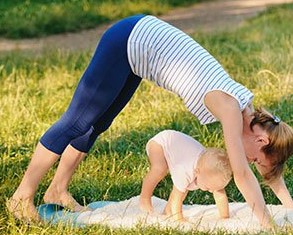
Mindful Awareness
Mindfulness, at its core, is like a gentle embrace of the present moment, both inside and out. It’s about purposefully tuning into what’s happening right now without any judgment or the weight of desiring things to be different.
Mindfulness isn’t just a tool for grown-ups seeking to reduce stress, boost their well-being, and find their way back to calm amidst life’s storms. Its soothing benefits extend to the world of children, where worries and mental health concerns are increasingly common. By introducing mindfulness practices to children, we can offer them the same mental health gifts that adults enjoy. And, as an added bonus, it helps to nurture deeper connections between adults and kids, fostering open communication, empathy, and unwavering emotional support.
One of the most profound gifts that mindfulness imparts to children is the development of self-regulation skills. They learn how to navigate challenging situations, maintain composure, and return to a state of tranquility even in the midst of turmoil. These skills are instrumental in managing emotions, staying focused, paying attention, and blocking out distractions.
It’s quite fascinating when you watch babies and little kids. You’ll see something remarkable: they’re really good at being in the here and now. Children (usually under 4 years old) are experts at this. They don’t worry about what happened before, and they don’t fuss about what’s coming next. They simply live in the moment without making things too complicated. But as they get older, this natural skill often fades away. That’s where we, as parents and teachers, come in. Our job is to help them hold onto this wonderful ability.
The journey begins with us – the adults. We cannot effectively teach mindfulness if we are not willing to embrace it ourselves. To nurture mindfulness in our children, we first become mindful parents and educators. This means immersing ourselves in the practice and reaping the benefits it offers. Try being fully present with your child, as this helps them feel acknowledged and valued, nurturing their overall development. Active listening goes beyond just hearing words; it involves understanding the emotions, needs, and feelings behind what they say. Children often express themselves through their emotions, not just their words.
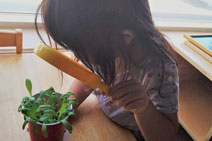
At Alpha’s Discovery Kids, mindful awareness permeates every aspect of our curriculum. We believe that mindfulness is not just an activity; it’s a way of life. It’s a way of being with children, nurturing their growth and well-being.
In our classrooms, mindfulness activities take various forms, providing children with tools to develop and sustain mindfulness throughout their lives. Here are some ways we incorporate mindfulness activities:
- The use of “calming jars” filled with sparkling glitter. By simply shaking and observing the falling sparkles, children engage their senses and return to the present moment.
- Deep breathing exercises, combined with gentle movements. These instill calmness in both body and mind.
- Activities such as the “5 Senses Exercise“, which encourage children to list things they see, touch, hear, smell, and taste, grounding them in the present moment.
- Provide lots of outdoor activity. Surrounded by the serenity of nature, children naturally feel a sense of calm. Nature walks, bird-watching, and cloud-gazing are just a few ways we integrate mindfulness into our outdoor experiences.
At Alpha’s Discovery Kids, mindfulness isn’t just a concept; it’s a philosophy. We understand that the early years of a child’s life are the most pivotal, and our commitment to their holistic development extends to nurturing their mindfulness. As we guide children to notice and appreciate each moment, both inside and out, we’re sowing the seeds for a lifetime of well-being, resilience, and happiness. Each child under our care is cherished as an extension of our own families, and their health and happiness remain our paramount focus.
For more information about early childhood education topics, check out my YouTube series.
To book a tour of one of our centres, please contact us .
Navigating Cold and Flu Season
Navigating Cold and Flu Season
by Susie Beghin, RECE, Founder of Alpha’s Discovery Kids
As parents, we all want our little ones to stay healthy and happy. However, it’s no secret that young children can be particularly susceptible to colds and the flu. If your child attends daycare, you may have noticed that illnesses seem to make their rounds quite frequently, particularly for those in the 12-18 month age group. This may raise concerns among parents, but it’s essential to understand the underlying cause.
Here at Alpha’s Discovery Kids, we provide an environment where children come together to learn, play, and interact. While these interactions are incredibly valuable for their social and emotional development, they also mean that children are exposed to more germs and viruses than they would be at home.
But believe it or not, this early exposure to various illnesses can be beneficial in the long run. Our immune systems learn by doing. When children are exposed to viruses, their immune systems learn to recognize and fight them off. This exposure helps build their immunity, making them less susceptible to similar illnesses in the future.
Although no parent wants to see their child sick, young children often bounce back from illnesses more quickly than adults. Their bodies are primed to recover swiftly, which means that while they may experience more illnesses, these illnesses tend to be milder and shorter in duration. It’s all part of the learning process their immune systems go through.
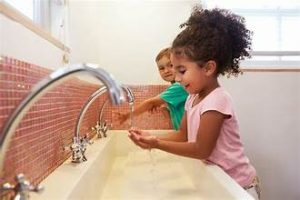
Cold and Flu Prevention
That said, as we approach cold and flu season, there are some things we do at each of our locations to help prevent the spread of illness. One of the most effective ways to minimize the spread of illnesses is through proper hygiene. Hand washing is a crucial practice that we encourage among both children and staff. Our daycare facilities are equipped with sanitation stations, and our dedicated team ensures that children wash their hands frequently throughout the day.
Nutrition also plays a significant role in building a robust immune system. We believe that nutrition plays such a large role in our children’s development that nutrition (and physical activity) is one of our 4 Pillars of Learning, in addition to Language & Literacy, STEAM (Science, Technology, Engineering, Art and Math), and Mindful Awareness. We focus on providing balanced meals and snacks that support your child’s health and well-being, as a well-nourished body is better equipped to fight off infections.
In addition, we maintain open lines of communication with parents. If your child isn’t feeling well, we need to know. By keeping sick children at home, we can help prevent the spread of illnesses within our daycare community.
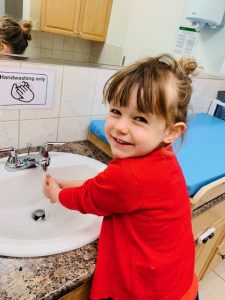
Preparing for Cold and Flu Season
As a parent, there are several steps you can take to prepare for cold and flu season and help keep your child healthy:
- Teach Good Hygiene: Encourage your child to wash their hands regularly with soap and water for at least 20 seconds. Teach them to cover their mouth and nose when sneezing or coughing, ideally with a tissue or their elbow.
- Maintain a Healthy Diet: Provide your child with a balanced diet rich in fruits, vegetables, and whole grains to support their immune system.
- Get Plenty of Rest: Ensure your child gets enough sleep as it plays a vital role in immune system function.
- Consider Probiotics: Some studies suggest that probiotics may help boost the immune system. Consult with your pediatrician or family doctor before adding any supplements to your child’s diet.
- Stay Informed: Keep yourself informed about current health guidelines and recommendations, especially during cold and flu season.
- Get Some Vitamin C and D – Whether it is by natural method (sun/oranges) or supplements, it’s important to get these vitamins.
While it’s common for children to experience more illnesses in daycare settings, it’s part of their natural immune system development. Alpha’s Discovery Kids is committed to creating a supportive and healthy environment for your child, and we encourage parents to partner with us in supporting wellness initiatives. By teaching good hygiene practices, maintaining a healthy lifestyle, and staying informed, you can help your child stay resilient and thrive, even during cold and flu season.
For more information about topics related to the early years, check out my YouTube videos at or to book a tour, please contact us at https://www.alphasdiscoveryclub.com/contact/ .
Cultivating Healthy Bodies and Minds: The Importance of Physical Activity & Nutrition for Children
Cultivating Healthy Bodies and Minds: The Importance of Physical Activity & Nutrition for Children
by Susie Beghin, RECE, Founder of Alpha’s Discovery Kids
As an Early Childhood Educator and a mother, my life’s mission has always been clear: to provide children with the best possible start in life. I deeply understand the significance of nurturing every facet of a child’s development. This unwavering commitment led me to create a comprehensive educational framework known as the Four Pillars of Learning.
The Four Pillars of Learning, prominently displayed in every classroom across our three Alpha’s Discovery Kids locations, ensure that children have access to a well-rounded education. These pillars address a child’s physical, cognitive, social, emotional, and spiritual well-being and comprise Language & Literacy, STEAM (Science, Technology, Engineering, Art, and Math), Physical Activity & Nutrition, and Mindful Awareness.
In today’s world, where childhood obesity is on the rise, it’s crucial that we take a proactive approach to children’s health. This proactive approach begins with education, instilling the importance of physical activity and nutrition right from birth.

Physical Activity: Building Strong Bodies and Minds
Physical activity isn’t just about keeping the body in motion; it’s about nurturing the mind and promoting emotional well-being. The benefits of physical activity extend beyond the physical; they encompass mental and emotional health as well. Engaging in physical activities can improve bodily functions, elevate mood, and promote the healthy development of bones and muscles.
At Alpha’s Discovery Kids, we recognize the importance of physical activity in the early years. We firmly believe that building a foundation for physical well-being early in life can positively impact a child’s entire existence.
In early childhood, children are naturally active, curious, and fearless. They have a genuine willingness to explore and discover their own abilities. This is a crucial time for them to have opportunities to climb, run, crawl, dance, jump, balance, and engage in a multitude of activities. These activities not only build physical strength but also foster self-confidence, coordination, and concentration right from an early age.
In our daycare setting, we wholeheartedly embrace the significance of physical activity, both indoors and outdoors. We understand that children need a variety of movements to support their growth and development. Whether it’s gross motor skills, involving larger muscles and movements, or fine motor skills, which focus on smaller muscle groups like fingers learning to grip a pencil, we ensure that both are a part of the daily routine.
For gross motor skills, we often engage in activities like engineering with building blocks or encouraging kids to run and play outside. Fine motor skills are honed through activities such as threading beads or playing with playdough. This comprehensive approach ensures that children are developing both their larger muscle groups and their fine motor control.

Nutrition: Fueling Healthy Lives
In tandem with physical activity, proper nutrition plays a pivotal role in a child’s development. At Alpha’s Discovery Kids, we embrace family-style dining, where children sit together at a table with a teacher, and are encouraged to be independent. This approach brings several benefits. It empowers children to portion their meals themselves, fostering a sense of self-regulation and helping in the battle against childhood obesity.
Furthermore, family-style dining exposes children to a balanced menu with foods from all food groups, ensuring they receive the essential vitamins and minerals they need. Variety is at the core of our nutritional philosophy. We encourage children to explore various foods from diverse cultures, expanding their palates and discovering different flavors, textures, and tastes. Our emphasis is on whole foods with minimal processing, a fundamental principle in our approach to nutrition.
Setting a positive example is of utmost importance. Children often emulate the eating habits of adults, so we, as caregivers, should strive to be good role models. We should not only focus on what we eat but also how we eat and when we eat. Involving children in meal preparation, from setting the table to selecting fruits and vegetables during grocery shopping, gives them a sense of involvement and helps them understand where their food comes from.
In addition, teaching children to recognize proper portion sizes will help guide them on how to satisfy their hunger without overeating or undereating. This sets the stage for a healthy relationship with food that can last a lifetime.
The Physical Activity & Nutrition pillar at Alpha’s Discovery Kids is not merely a program; it’s a way of life. We are passionate about nurturing children’s physical well-being through a combination of active play and nutritious eating. We firmly believe that by instilling these healthy habits from a young age, we are laying the foundation for a lifetime of well-being and success. Every child in our care is treated as an extended part of our own families, and their health and happiness are our top priorities.
For more information, or to book a tour, please contact us!
The Importance of Socialization for Young Children: Nurturing Minds and Hearts
The Importance of Socialization for Young Children: Nurturing Minds and Hearts
by Susie Beghin, RECE, Founder of Alpha’s Discovery Kids
At Alpha’s Discovery Kids, we are passionate about providing children with an environment where they can learn, grow, and thrive. And we deeply understand the paramount importance of socialization in a child’s early years. It’s not merely about play; it’s a foundational element of a child’s development that shapes their future in profound ways. We recognize that children are inherently social beings, wired to connect, learn, and grow through interaction with their peers and caregivers.
As a parent myself, I understand how crucial socialization is to nurturing empathy, honing communication skills and learning the art of human interaction. In the ever-evolving landscape of early childhood education, we understand that the first six years of a child’s life are the most formative. It’s during this period that a child’s brain is in a state of rapid development, absorbing knowledge, experiences, and social cues like a sponge. As Early Childhood Educators, we are not merely caretakers; we are shapers of young minds and hearts.
To us, socialization is not a byproduct of our curriculum but an integral part of it. Alpha’s Discovery Kids understands that every child is unique, and their social needs vary. Some children may thrive in a bustling social environment, while others may need more gradual and individualized socialization experiences. Our approach is flexible, recognizing and respecting these differences, allowing each child to bloom at their own pace.

The effects of COVID-19 on socialization
The COVID-19 pandemic presented unprecedented challenges for children’s socialization. Social distancing measures, mask mandates, and lockdowns disrupted the traditional avenues for social interaction. Many children missed out on the crucial social experiences that daycare and preschool settings offer. Here are some of the effects we observed during this challenging period:
- Insecure Attachment Issues: When young children are unable to establish secure attachments due to limited social interaction, it can have devastating consequences for their emotional well-being. Secure attachments form the basis of healthy relationships later in life.
- Excessive Crying: Inconsolable crying can be a sign of distress caused by a lack of socialization. Children need the comforting presence of caregivers and peers to feel safe and secure.
- Language Delays: Language development relies heavily on social interaction. With masks obscuring our facial expressions and limiting verbal communication, we noticed that language delays became more prevalent among young children.
The Importance of Early Socialization
The longer children are isolated from social experiences, the harder it can be to reintegrate them into social settings like daycare. A 3-year-old who has been isolated for an extended period may face more significant challenges than a 12-month-old in adjusting to group environments. Early socialization sets the stage for a child’s future interactions and relationships, making it a critical aspect of their development.
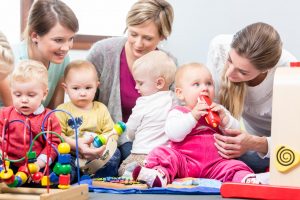
Three dedicated and happy young mothers sitting together on the floor, while watching their babies playing with safe multicolored toys at a modern playground for infants
Alpha’s Discovery Kids has observed significant advantages associated with socialization, and these benefits extend beyond full-time care. Even part-time attendance provides numerous advantages. Here are some of the benefits of socializing at daycare:
- Emotional Development: Children learn to identify and manage their emotions through interactions with peers and caregivers. They develop empathy, conflict resolution skills, and a sense of belonging.
- Cognitive Growth: Social play fosters cognitive development. Children engage in problem-solving, creativity, and critical thinking as they interact with others.
- Language Skills: Daily interactions with peers and teachers help improve language skills. Children learn to communicate effectively, expanding their vocabulary and language fluency.
- Independence: Socialization encourages independence. Children learn to make choices, solve problems, and take initiative in a supportive environment.
At Alpha’s Discovery Kids, every child in our care is treated as an extended part of our own families. We provide a nurturing and stimulating environment where socialization is a central focus. Our dedicated teachers, who are always patient, caring, and committed to making each child’s experience the best it can be, facilitate social interactions that promote growth and development.
We believe that socialization is not a luxury but a necessity for young children’s development. The pandemic underscored its significance, reminding us that socialization is vital for emotional, cognitive, and social growth. At Alpha’s Discovery Kids, we remain dedicated to providing a safe and enriching environment where children can thrive through socialization, guided by our Four Pillars of Learning. We are committed to empowering the leaders and innovators of tomorrow, one social interaction at a time.
For more information about how to use the Four Pillars of Learning system, check out Susie’s book, Learn To Play: The Four Pillars Learning System on Amazon.
For more information on early childhood topics, check out my YouTube series, or to book a tour, please contact us.
Unlocking the Wonders of STEAM: Embracing the Power of Math
Unlocking the Wonders of STEAM: Embracing the Power of Math
by Susie Beghin, RECE, Founder of Alpha’s Discovery Kids
At Alpha’s Discovery Kids, we are passionate about providing a nurturing and enriching learning environment where children can thrive.
As advocates of STEAM education, we wholeheartedly embrace the power of Science, Technology, Engineering, Arts, and Math in shaping well-rounded individuals. Our commitment to excellence lies in infusing STEAM concepts throughout our curriculum, empowering young minds with essential skills and fostering a love for learning that lasts a lifetime.
And that’s why we created our unique and comprehensive approach to education, centered around the “The Four Pillars of Learning.” These pillars serve as the foundation of our curriculum, ensuring that every child’s physical, cognitive, social, emotional, and spiritual well-being is nurtured and supported.
The 4 Pillars of Learning consist of Language & Literacy, STEAM (Science, Technology, Engineering, Arts, and Math), Physical Activity & Nutrition, and Mindful Awareness. Each pillar is carefully designed to complement and reinforce one another, creating a holistic learning experience that fosters creativity, critical thinking, and a growth mindset in our young learners.
By embracing these four pillars, we aim to provide a well-rounded education that prepares children not only for academic success but also for personal growth and success in all aspects.

When it comes to Math, it is more than just numbers and equations. Math is a fundamental tool for understanding the world around us. From counting and measuring to problem-solving and critical thinking, math plays an integral role in shaping a child’s cognitive abilities and analytical skills.
Math is an important part of a child’s development from ages 1 to 5 years. During this time, children explore patterns, shapes, sizes, and counting and encounter math concepts in their everyday activities, from counting cars on the road to the number of plates on the table.
However, math can be daunting for both kids and parents. That’s why we believe in teaching math in a visual and hands-on way. For example, when we say 1 plus 1 equals 2, it’s easier to understand when we can see and touch objects to represent those numbers. We want children to experience math in a concrete way, so they truly grasp its concepts.
Math is all around us, and it’s essential to make it approachable and enjoyable for everyone. Some important math skills that we focus on here at Alpha’s Discover Kids include:
Numeracy skills – Skills like counting are among the first things children learn. Many children learn to count from 1 to 10 by age three. We encourage counting everyday objects in a hands-on way to help them grasp the concept. Once children start to understand the concept of counting, you can introduce written numbers so they learn to associate the written form with the concept.
Problem-solving – Another essential math skill is problem-solving, although this can be a tricky concept for many kids. We support children in their problem-solving process without doing it for them. By using number concepts and skills, we help them develop confidence in their own ability to think things through.
Measurement – Measurement is an exciting aspect of math. Children can explore time, weight, distance, length, height, and width in various activities.
Classification – Classification is a fun game where children sort and classify objects based on different characteristics like shape, size, or colour.
To incorporate math into everyday activities, we sort various items into baskets, provide objects to count while filling and emptying containers, and make number figures from play dough. These activities make math a part of their daily fun, helping children build essential math skills while having a great time.
We aim to instill a love for Math by making it accessible, enjoyable, and applicable to the real world. We foster a growth mindset, where children embrace challenges, ask questions, and take risks in their mathematical explorations.
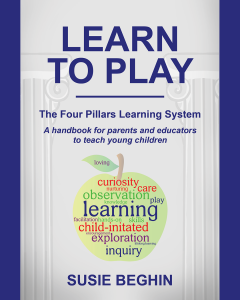
For more information about how to use the Four Pillars of Learning system, check out Susie’s book, Learn To Play: The Four Pillars Learning System on Amazon.
For more information about Alpha’s Discovery Kids, or to book a tour, please contact us at https://www.alphasdiscoveryclub.com/contact/ or call us at 905-823-8257.

